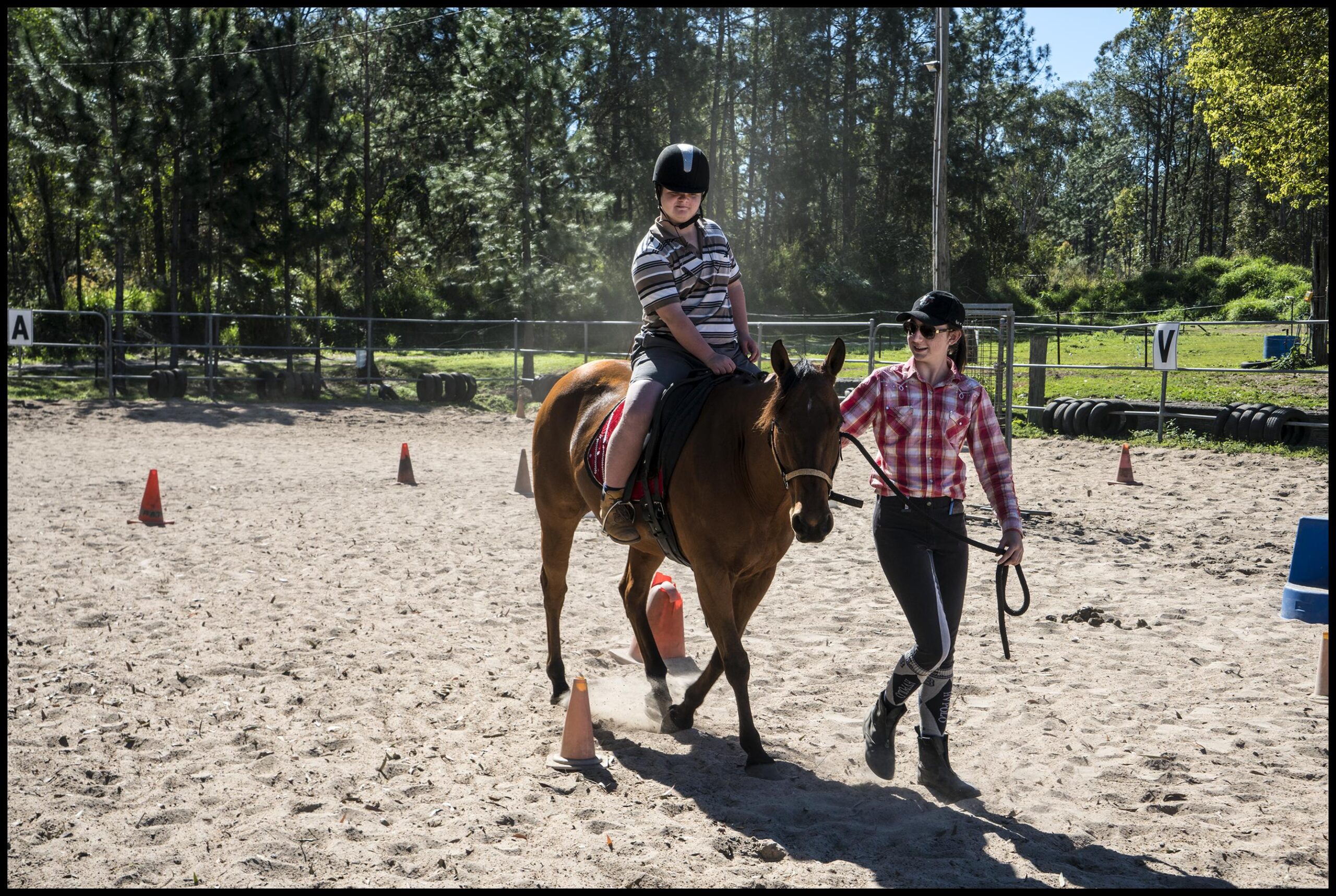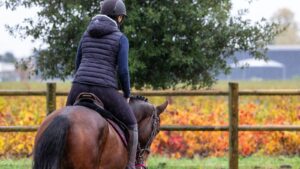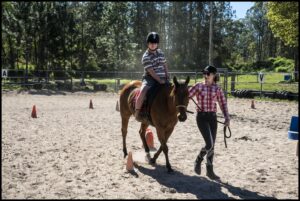Galloping through fields of golden grass, the rhythmic beat of hooves resonates with the spirit of freedom. The bond between humans and horses has withstood the test of time, encapsulating an age-old connection that transcends language and culture. For centuries, these majestic creatures have served us faithfully, tirelessly supporting our journey through history. However, unlocking the true potential of these magnificent beings requires more than just a saddle and reins. It demands a deep understanding of essential horse training techniques, allowing us to navigate this unique partnership with grace and finesse. In this article, we invite you to take the reins and embark on an extraordinary journey into the world of horse training, where trust, communication, and an unwavering bond guide our every stride. Join us as we delve into the secrets of this ancient art, empowering equestrians of all levels to truly connect with their four-legged companions. So saddle up, set your spirit free, and let us explore the realm of essential horse training techniques together.
Developing a Strong Bond: Establishing Trust and Communication with Your Horse
Building a strong bond with your horse is crucial for effective training and a harmonious relationship. Trust is the foundation of this bond. To establish trust with your horse, it is important to prioritize their safety and well-being. Spend quality time with your horse, engaging in activities such as grooming, lunging, and hand grazing. By consistently showing care and respect, your horse will begin to rely on you and trust your guidance.
Avoid rushing the process of building trust, as it takes time. Patience is key. Listen to your horse’s cues and body language, recognizing when they are comfortable or anxious. Be consistent in your actions and always follow through with your commands. Trust will grow as you create a safe and predictable environment for your horse.
Open and effective communication is essential in horse training. Horses communicate primarily through body language, so it is important to learn how to interpret their signals and respond appropriately. Pay close attention to their posture, facial expressions, and movements, as they can convey a multitude of messages.
When communicating with your horse, use clear and consistent cues. Establish a system of verbal and physical cues that your horse can easily understand. This can include voice commands, light rein pressure, or leg aids. Consistency in your cues will help your horse to understand and respond correctly.
Remember to always reward your horse for their efforts and achievements. Positive reinforcement, such as praise or a treat, is a powerful motivator and encourages continued cooperation. By focusing on effective communication, you will build a solid foundation for successful training sessions.
By establishing a strong bond with your horse through trust and effective communication, you can achieve remarkable results in your training endeavors. Trust will enable your horse to overcome fears and challenges, allowing them to progress both physically and mentally.
Furthermore, open communication will ensure that you and your horse are on the same page, creating a deeper connection and understanding. As you continue to develop these skills, you will witness increased responsiveness and willingness from your equine companion.
Remember, building trust and effective communication with your horse is a continuous process. Dedicate time and effort to strengthen this bond, and enjoy the rewarding journey of partnership and growth that awaits you.
Mastering the Basics: Fundamental Training Techniques for a Well-Behaved Equine
When it comes to training horses, mastering the basics is crucial for developing a well-behaved equine companion. Whether you are a novice rider or an experienced equestrian, understanding essential training techniques is key to developing a strong foundation with your horse.
To start, it’s important to establish clear communication with your horse. Using natural aids such as your seat, legs, and hands, you can convey your intentions effectively. Remember to maintain a calm and confident demeanor, as horses are highly attuned to their rider’s emotions.
Next, focus on basic obedience training. Teach your horse to respond to verbal cues and physical commands, such as walk, trot, halt, and back. Reinforce these commands consistently and reward your equine friend for correct responses. This will create a cooperative and attentive horse, making future training endeavors much smoother.
Building Trust Through Groundwork
Groundwork is an essential aspect of equine training, particularly in building trust and respect between you and your horse. By carrying out exercises such as leading, lunging, and desensitizing, you can establish a solid foundation for more advanced training.
Start by leading your horse confidently and assertively. Ensure they respond to your body language and halt when you stop. Gradually introduce lunging exercises to improve your horse’s obedience and responsiveness to commands. Don’t forget to incorporate desensitization techniques, exposing your horse to various stimuli such as plastic bags or loud noises, to develop their confidence and adaptability.
Riding Techniques for Success
Once your horse is responsive and obedient on the ground, it’s time to transfer those skills to riding. Begin with basic riding exercises like circles, figure eights, and transitions between gaits. Practice these exercises consistently to develop your horse’s balance, suppleness, and responsiveness to your aids.
When riding, always maintain a correct position and use clear and consistent aids. Remember to praise your horse for correct responses and remain patient throughout the learning process. As you progress, experiment with new techniques like lateral movements such as shoulder-in and leg yield, to further refine your horse’s suppleness and collection.
Fine-tuning Performance: Advanced Methods to Enhance Horse Training Experience
Take the Reins: Dive Into Essential Horse Training Techniques!
When it comes to enhancing the horse training experience, there are advanced methods that can fine-tune performance and take it to the next level. These techniques not only strengthen the bond between horse and rider but also improve overall performance and success in various disciplines. Let’s explore some essential horse training techniques that every equestrian enthusiast should know.
1. Target Training:
Target training is an effective method that helps horses develop focus, concentration, and response to cues. The process involves teaching the horse to touch or follow a designated target object, such as a cone or a small ball. By gradually introducing verbal and physical cues, the horse learns to associate certain behaviors with specific commands, making it easier to communicate and guide them during training sessions.
2. Desensitization:
In the world of horse training, desensitization is a key skill that every rider should master. It involves exposing the horse to various types of stimuli, such as loud noises, plastic bags, or unfamiliar objects, in a controlled and safe manner. This process helps the horse become more confident and less reactive, making them more reliable in unpredictable situations. From crossing noisy bridges to encountering unusual obstacles, desensitization techniques enable the horse to remain calm and focused.
3. Gridwork and Pole Exercises:
Gridwork and pole exercises are commonly used in horse training to improve coordination, balance, and agility. These exercises involve setting up a series of poles or jumps in a specific pattern to challenge the horse’s footwork and stride. By incorporating different distances between the obstacles and varying their heights, horses develop better proprioception and learn to adjust their pace and stride length. Gridwork and pole exercises are also an excellent way to keep the horse engaged and mentally stimulated during training sessions.
Unlocking Potential: Exploring Specialized Training Approaches for Competitive Equestrians
In the exhilarating world of competitive equestrian sports, mastering essential horse training techniques is the key to unlocking your full potential as a rider. Whether you’re a seasoned competitor or an aspiring equestrian, understanding specialized training approaches can take your performance to new heights. In this post, we will delve into some of the most effective methods used by top professionals, giving you the tools to harness your horse’s true potential and thrive in the arena.
Riding with Precision: One crucial aspect of specialized training is developing a strong foundation through precision riding. The ability to communicate with your horse effectively is essential for achieving harmony and unity in the saddle. Techniques such as lateral work, collection, and extension exercises help enhance your horse’s responsiveness, flexibility, and balance. By mastering these techniques, you will sharpen your aids, enabling you and your horse to perform complex maneuvers with ease and elegance.
Psychological Conditioning: Competitive equestrians understand that horse training extends beyond physical exercise. Mental conditioning is just as important to ensure peak performance. Implementing positive reinforcement techniques helps to build trust, confidence, and motivation within your equine partner. Establishing a structured routine, incorporating reward-based training, and exposing your horse to various stimuli can help reduce anxiety and develop a calm and focused mindset in the show ring.
| Training Approach | Benefits |
|---|---|
| Dressage Training | Improves balance and coordination |
| Jumping Exercises | Enhances horse’s agility and scope |
| Interval Training | Builds stamina and endurance |
| Cross-Training | Develops versatility and adaptability |
So, saddle up and explore these specialized training approaches to unlock your potential as a competitive equestrian. Remember, patience, consistency, and a deep understanding of your horse’s individual needs are fundamental in achieving success. By combining precision riding, psychological conditioning, and a range of training techniques, you’ll be well on your way to harnessing the full capabilities of both you and your equine partner.
As we bid farewell to this captivating journey through essential horse training techniques, we emerge with a profound understanding of the intricate bond between humans and these majestic creatures. From the moment we first stepped foot into the stable, we entered a world that exists beyond the realm of ordinary connection.
Through patient observation and committed practice, we have uncovered the depths of horse training, discovering that it is not simply a series of commands and tricks, but rather a language unique to each equine companion. We have learned to communicate through subtle movements, gentle gestures, and unwavering respect, earning their trust and forging an unbreakable partnership.
It is in these moments of collaboration that we witness the true power and athleticism of these incredible animals. From guiding their graceful strides across the arena to commanding their astonishing leaps over imposing obstacles, we have become equal participants in their extraordinary performances.
But horse training is not solely about physical prowess; it is a journey that transcends the mere art of riding. It teaches us patience, compassion, and unwavering dedication. It teaches us to listen, not with our ears, but with our hearts. And ultimately, it teaches us that the connection we forge with our equine companions extends far beyond the confines of the arena.
As we part ways, ready to embark on our individual paths, let us carry this newfound knowledge and appreciation with us. Let us continue to nurture the bond we have established with these remarkable beings, always remembering that we are not mere masters but compassionate guides on their journey through life.
So, go forth, dear reader, with reins held firmly in your grasp and a heart open to the infinite possibilities that lie ahead. Embrace the challenges, relish the triumphs, and may your horse training endeavors forever be filled with wonder, harmony, and a deep love for these extraordinary creatures.



